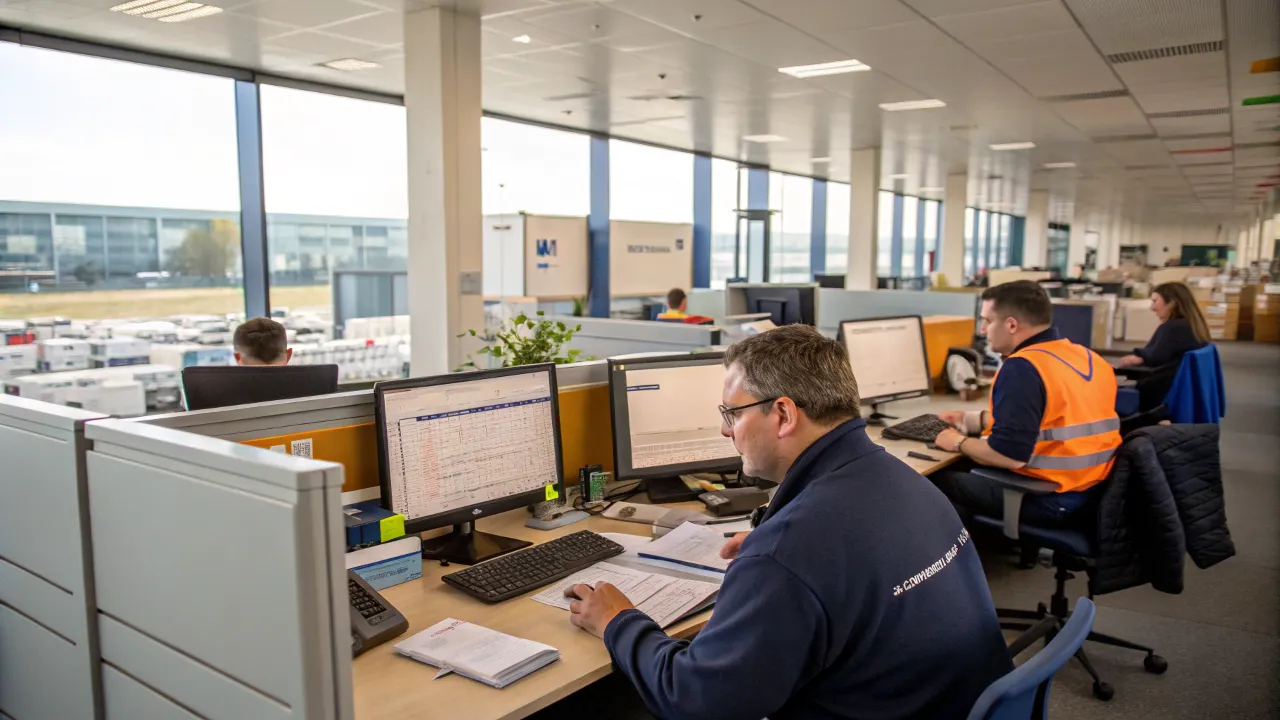Table of Contents
When it comes to the logistics and transportation industry, understanding the operations involved is essential. One common question that arises is: How long does linehaul office take? In this article, we’ll explore the various factors that affect linehaul office processing times, how they are managed, and what you can expect when you’re involved in a linehaul operation.
What is Linehaul?
Linehaul refers to the transportation of goods over long distances, typically between regional hubs or central distribution points. It is a key part of the logistics chain and plays a critical role in ensuring that products move efficiently across different locations.
Understanding how long linehaul office operations take can help businesses better plan their logistics, optimize routes, and maintain timely deliveries, Linehaul Office Information.
Factors Affecting Linehaul Processing Time
- Distance and Route Complexity
- Longer distances require more time for linehaul processing.
- Routes with multiple stops or complex logistics can increase overall time.
- Volume of Goods
- The more products that need to be handled, the longer the linehaul operation may take.
- Sorting and organizing large volumes add time to the process.
- Transportation Mode
- Whether the goods are being transported by truck, rail, or air, the mode of transportation affects the overall processing time.
- Air freight typically moves faster, but costs are higher.
- Traffic and Weather Conditions
- Unexpected delays such as heavy traffic or adverse weather can significantly impact the time taken for a linehaul operation.
- These external factors are often unpredictable.
- Load and Unload Efficiency
- Efficient loading and unloading can speed up the process. However, any delays at either end can add to the overall linehaul time.
- Equipment and Technology
- Advanced logistics technology can optimize routes, reduce wait times, and ensure smoother operations.
- Manual processes may slow things down, while automated systems can expedite the process.
The Role of Linehaul Office in the Process
The linehaul office plays a central role in managing, tracking, and coordinating the logistics of linehaul operations. Here’s how it impacts the overall time:
- Dispatching and Scheduling: Linehaul office teams are responsible for scheduling pickups and drop-offs. Efficient dispatching can reduce delays.
- Documentation: All paperwork, including shipping labels and customs forms, is handled in the linehaul office. Mistakes in documentation can cause delays.
- Communication: The linehaul office serves as the communication hub between drivers, warehouses, and distribution centers. Any communication breakdowns can result in delays.
Average Time for Linehaul Operations
While the exact time varies depending on the factors mentioned, the average time for a linehaul office operation can range anywhere from 1 to 5 days. This range depends on the distance, traffic conditions, and the operational efficiency of the logistics company. For example:
- Short-distance linehaul (within the same state) might take 1–2 days.
- Long-distance linehaul (across states or countries) can take 3–5 days.
Also Read: The Rise of the Katt Williams Standing on Business Meme
Common Delays in Linehaul Operations
Despite efforts to streamline the process, delays are sometimes inevitable. Common reasons for delays include:
- Unpredictable Traffic: Road congestion or accidents can delay the transportation process.
- Weather Issues: Storms, snow, or floods can impede delivery times.
- Equipment Malfunctions: Problems with trucks or loading machinery can slow down operations.
- Customs and Border Delays: International shipments can be delayed due to customs procedures.
How to Improve Linehaul Office Time Efficiency
Improving linehaul office efficiency is essential for maintaining quick and reliable delivery times. Here are some tips:
- Route Optimization: Using route optimization software can help reduce delays caused by traffic and weather.
- Real-Time Tracking: Implementing tracking systems ensures that the linehaul office can monitor the process and address any issues in real time.
- Efficient Loading and Unloading: Streamlining the loading and unloading process can save valuable time, especially for large shipments.
- Automation: Automating tasks like scheduling, documentation, and communication can speed up the entire process.
How Does Linehaul Office Impact Overall Delivery Time?
The linehaul office directly influences the total delivery time by:
- Coordinating Transit Times: By aligning schedules and managing delays effectively, linehaul offices can minimize wait times and avoid bottlenecks.
- Ensuring Documentation Accuracy: Correct and timely documentation prevents delays at checkpoints.
- Optimizing Routes: Effective route planning saves time and ensures that drivers take the most efficient paths.
What Can You Do to Minimize Linehaul Delays?
There are several strategies that businesses can adopt to minimize delays during linehaul operations:
- Pre-book Pickups and Deliveries: Scheduling pickups and deliveries in advance allows better planning and reduces waiting time.
- Use of Advanced Technology: Implement GPS tracking, automated routing systems, and AI-based analytics to streamline operations.
- Establish Clear Communication: Having constant communication between the linehaul office and the drivers can help resolve issues as they arise.
How to Track Linehaul Office Progress
To track linehaul office progress, companies typically use various tools and systems, including:
- Shipment Tracking: Both companies and customers can use real-time shipment tracking to check on the status of their deliveries.
- Logistics Dashboards: These provide a visual representation of all ongoing linehaul operations and any issues that may have occurred.
- Communication Tools: Instant messaging and automated alerts can keep all parties updated about potential delays.
Key Takeaways
To wrap up, understanding the time involved in linehaul office operations can help businesses plan better and set realistic expectations for delivery times. Here are the most important points to remember:
- Linehaul office operations typically take between 1 to 5 days depending on various factors.
- The linehaul office’s role is crucial in dispatching, scheduling, and managing the flow of goods.
- Improving linehaul office efficiency can help reduce delays and enhance the overall logistics process.
- Advanced technology and clear communication are key to minimizing time spent on each operation.
By understanding these key elements and adopting strategies to improve operations, businesses can ensure timely deliveries and better customer satisfaction.
How Long Does Linehaul Office Take?
Linehaul office processing times can be managed and reduced with proper planning, use of technology, and efficient coordination. With an average time of 1 to 5 days, businesses can optimize their linehaul operations for smoother and faster deliveries.





